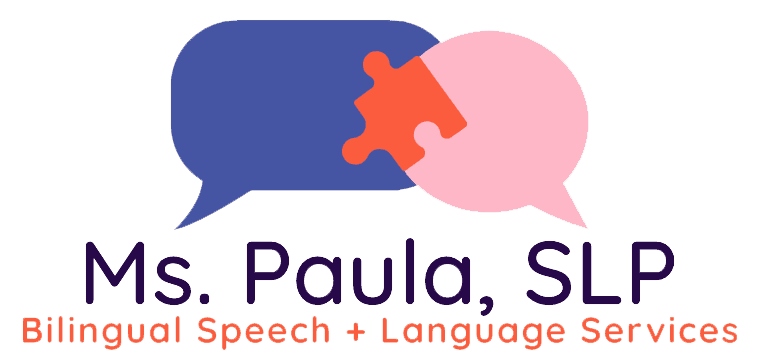If your bilingual child has trouble with a Mixed Receptive-Expressive Language Disorder, consider in-home Spanish speech therapy near you.
Bilingual children that suffer from a language disorder or delay can significantly benefit from in-home Spanish speech therapy. Many children that learn both English and Spanish simultaneously may need speech therapy in one or both languages. If your child is raised in a bilingual English-Spanish household, we cannot overstate the importance of this therapy.
What is Mixed Receptive-Expressive Language Disorder? How can in-home Spanish speech therapy near me help my child? These are some of the questions that come to your mind. This post gives you answers to these key questions so that you can take the right steps in improving your child’s language and speech abilities.
What is Mixed Receptive-Expressive Language Disorder?
Children with a language disorder can suffer from difficulty in understanding spoken language and/or responding properly. The result is significant difficulty in communicating with everyone. This further leads to problems at school.
At its core, it is basically a developmental disorder. It can affect your child’s ability to understand spoken language, speak, read, and write. There are certain differences in the brain’s language processing centers. The underlying cause can either be an inherited condition or the result of a trauma or stroke. Developmental problems such as Down syndrome or autism can also be associated with this disorder.
Is Mixed Receptive-Expressive Language Disorder a medical condition? Yes, it is a medical condition and can affect your child’s academics if the right steps aren’t taken in time. Timely intervention in the form of in-home speech therapy can mean a faster resolution. Otherwise, it could extend your child’s learning gap.
Is there any single cause of Language Disorder? There’s no single cause of a language disorder. There can be multiple contributing factors. What makes things more difficult is that many times the underlying cause for the language challenges cannot be identified. Autism, problems during pregnancy and/or birth, birth defects, and certain medical conditions are some of the causes in children. It can develop later in life due to brain injury or certain illnesses.
It can be difficult for many parents to accept this reality, but children with Mixed Receptive-Expressive Language Disorder may also need special academic support even if they are not officially considered to have a learning disability
How to Tell If Your Child Has Mixed Receptive-Expressive Language Disorder?
Language issues can be difficult to notice in your child before they begin talking. If they have a problem with oral communication, it may be the first sign of a language disorder.
Some of the other signs are as follows:
- Difficulty following simple directions
- Trouble learning new words and limited vocabulary relative to peers
- Understands stories being read aloud but shows the inability to retell them
- Uses the word ‘um’ often
- Replaces general words such as ‘stuff’ for precise words
- Uses certain words or phrases repetitively
- Rarely discusses any feelings or shares any ideas
- Shows signs of being less talkative
- Conversational skills are worse compared to peers
- Gets frustrated due to the inability to communicate ideas or thoughts
- Has difficulty with verb tense and skips words
- Is capable of pronouncing words and sounds, but has difficulty constructing sentences that make sense or makes limited sentence structures
In-home Spanish speech therapy can also help with certain language patterns that are common among bilingual children. For example, some children may mix up English and Spanish syntax rules by ordering English words just like they are ordered in a Spanish sentence. Others may code switch. They may substitute English words for Spanish words, or vice versa.
How Does In-Home Spanish Speech Therapy Help?

Our SLP will conduct a bilingual assessment to identify the underlying causes of the communication challenges your child is having. We will find answers to the following questions:
- Has the problem arisen after they started learning the second language or from the first language?
- Is it a communication difficulty that is independent of a specific language?
Once we have identified the cause, our in-home speech therapy will focus on treating the communication issues across all language skills.
Typical Spanish speech therapy for a language disorder is focused on different areas, depending on the kind of issue. This includes:
- Code-Switching: If there is excess code-switching, it can lead to communication problems. Children sometimes rely on their vocabulary knowledge in one language (L1) to fill in the blanks of their second language (L2). If used appropriately, this is okay. However, a child may in fact present with poorly developed grammatical understanding of one or both languages.
- Accents & Phonetics: In-home Spanish speech therapy may also focus on the phonetics of Spanish and English. Our skilled SLPs are able to target missing or erroneous sounds with those differences in mind.
- Language Differences: This part of the therapy focuses on learning the different rules of grammar and syntax for the different languages. We will first study the language errors pertaining to the specific set of grammar rules.
- Language Loss: Many times, bilingual children may show signs of losing skills in their primary language when developing them in the second language. The therapy will focus on learning to cultivate skills and vocabularies in both Spanish and English.
Conclusion
Are you looking for in-home Spanish speech therapy in Chicagoland?
At Ms. Paula, SLP, we take pride in providing professional and compassionate in-home speech therapy services to all our clients. We believe that children respond best to therapy from the comfort of their own homes. If you notice any signs of your bilingual child experiencing receptive-expressive language disorder or language difficulties, feel free to reach out to us to discuss in-home speech therapy near you.
Learn more about our Spanish speech therapy or click here to contact us.

